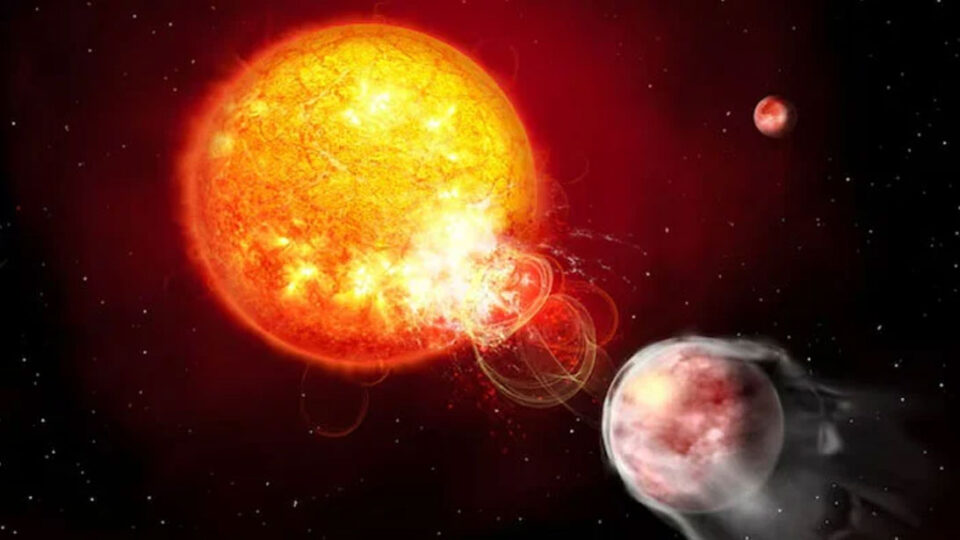NASA & ESA Discover “Cotton Candy” Exoplanet Enduring Giant Stellar Flares
Astronomers have discovered a strange and extreme exoplanet, HIP 67522 b, that is enduring an extraordinary cosmic ordeal. This gas giant orbits so closely to its young star that it appears to trigger massive stellar flares, potentially threatening its very existence.
The phenomenon, never observed before, was detailed in a new study published in Nature and led by astrophysicist Ekaterina Ilin of the Netherlands Institute for Radio Astronomy.
🔭 What Is HIP 67522 b?
Located around 407 light-years away in the Centaurus constellation, HIP 67522 b is an unusually lightweight gas giant — almost as wide as Jupiter but with only 5% of its mass. Its puffiness has earned it comparisons to cotton candy (or candy floss), making it one of the fluffiest exoplanets ever discovered.
But this cosmic marshmallow isn’t just unusual — it’s in danger.
☀️ A Deadly Orbit Around a Young Star
HIP 67522 b orbits its star in just 7 days, which is five times closer than Mercury orbits our Sun. The star itself is still in its early years — only 17 million years old, compared to our Sun’s 4.5 billion — and is known for frequent and intense flaring activity.
This tight orbit puts the planet in a hostile zone where it interacts with the star’s magnetic field, seemingly triggering massive solar flares that reach millions of miles into space.
💥 How the Planet May Be Triggering Flares
Scientists believe the interaction is likely due to magnetic disturbances caused by the planet’s movement through the star’s magnetic field. These disturbances may create Alfvén waves, a type of magnetic wave named after Nobel Prize-winning physicist Hannes Alfvén.
“It’s like a boat moving through water — the planet moves through the magnetic field and creates waves,” said Ilin. “These waves crash into the star and trigger enormous flares.”
🌬️ Could the Planet Lose Its Atmosphere?
These repeated flares may be heating up and inflating HIP 67522 b’s atmosphere, which is composed primarily of hydrogen and helium. Over millions of years, the lighter elements could be stripped away, leaving behind a smaller, denser world.
“Eventually, it might become what’s known as a sub-Neptune, a gas planet smaller than Neptune,” Ilin explained.
This slow transformation could reveal how giant gas planets evolve when exposed to extreme stellar environments.
🛰️ Observed by NASA & ESA
This incredible cosmic interaction was captured using data from two space observatories:
-
NASA’s Transiting Exoplanet Survey Satellite (TESS)
-
ESA’s CHEOPS (CHaracterising ExOPlanet Satellite)
Together, these powerful telescopes helped researchers monitor changes in brightness and track flare activity in detail.
🪐 Why This Matters
This discovery highlights the incredible diversity of planets outside our solar system — known as exoplanets — and the extreme conditions some of them face.
“It’s not a peaceful youth for this planet,” said Ilin. “But what it might become — a planet rich in heavy elements — is just as fascinating.”
HIP 67522 b serves as a remarkable case study in planetary evolution and deepens our understanding of how magnetic interactions can shape a planet’s future.
🌍 Fun Fact:
-
HIP 67522 b completes an orbit in just 7 Earth days!
-
The star it orbits is still a cosmic teenager at only 17 million years old.
Want more amazing space discoveries? Follow us for the latest news from NASA, ESA, and beyond!

